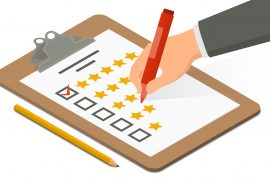Technology has dramatically changed the way we teach in universities. We increasingly see laptops, mobile phones, or tablets in classrooms, and bigger changes are taking place outside. In public health, there are more and more online students, and some public health degrees can be fully completed remotely, though blended learning that combines face-to-face classrooms and online components is more commonly used. There is no doubt that today’s technology can help lecturers and students in many ways, including assessment. However, there are pros and cons to using technology for assessment in higher education.
Benefits of using technology to enhance assessment
Using technology gives us flexibility as the numbers of both face-to-face and online students increase. It’s getting more affordable and accessible for both teachers and students and makes innovations in assessment design possible. It allows teachers to mark assignments while we are travelling overseas, record voice comments to students without spending too much time on typing feedback, set up frequently used comments in a ‘comment bank’ in Turnitin to quickly drag onto assignments while marking, to name a few advantages. With available technology we can not only work more efficiently, but also create a consistent, equable mode for marking assignments from a diverse cohort of students, an ideal way to promote standards-based assessment and link to criteria.
Technology can also assist us to give timely and constructive feedback which is highly desired by our students, for example by using in-class polling to get immediate responses to questions in the classroom.
The use of technologies in assessment can better engage students in teaching and learning, allowing them to take a more active role and increasing their motivation and self-esteem. Technology can provide opportunities for students to feed forward and critically reflect and can encourage more collaborative work with peers, leading to improved skills. Some collaborative tools, e.g. Google docs, can record individual contributions to a group assessment, which is very useful when marking work in public health. By providing text-matching it can also minimise plagiarism in assessment.
Challenges encountered
There are some challenges in implementing technology-integrated assessment too. First of all, not all lecturers are confident with technologies. There is a fear of the massive investment (time & money) required to grasp a new technology and understand how it can help with student learning and assessment, and with the alignment of the learning objectives in public health.
Educational technologies are not always available and reliable. They need stable electric power and access to Internet or Wi-Fi, not to mention assumed digital literacy from our students (and staff). They require a highly-qualified e-learning team to devote themselves to solving endless problems related to technology in education, which we should always appreciate. In addition, equity and ethical issues in relation to using technology may arise when we are dealing with diverse public health students from different economic background and those with disabilities.
Technologies cannot meet all of our needs in teaching and learning. Although better engagement with students is expected with emerging technologies, it is still very challenging to engage with a large number of online students, especially for assessment within the online environment. One way I have addressed this is to upload videos and photos to our online community to display what is happening in the classroom, which may reduce the potential isolation and anxiety students may feel due to reduced face-to-face time. However, overall there is a lack of research on whether technology-enhanced assessment has a positive impact on student learning outcomes in the public health context.
Personal experience
I am neither an expert on using technology nor have extensive experience in applying technology-enhanced assessment. I rely heavily on our dedicated e-learning team in public health, however I am getting more confident through the lessons I have learnt.
- My first lecture at the Sydney School of Public Health five years ago was cancelled due to a power cut on campus. Many students in the room were from countries where power cuts were very common and were surprised that the lecture could not continue without electricity. A key critical reflection on this situation was that we should be more resilient when technologies are not available.
- My first time using personal response ‘clickers’ in the classroom did not work out. I booked the equipment well ahead and rehearsed a couple of times on my office desktop. The initial plan was to give feedback to students based on their immediate responses and to adjust the focus of the lecture content accordingly. However, I failed to make it work in the real classroom the first time, learning that you should never assume that technology which works in one environment will also work in the other.
- I successfully used ‘clickers’ several times afterwards, receiving positive feedback from students. However, only one year later, clickers were out of date. I started to search for alternative in-class technologies to engage with the students and now encourage students to use their own devices, using for e.g. Socrative.
What I have found to be most helpful based on my own experience:
1) talking to colleagues who have successfully applied technology to their teaching
2) sufficient planning and preparation to set up assessment types and questions
3) collaborating with the e-learning support team
4) being familiar with what technological resources are available
5) practicing in the real setting if possible
6) always giving clear guidance to students for better cooperation
There are currently great expectations of Canvas, our new Learning Management System. I am looking forward to more opportunities to integrate technology with innovative assessment in public health education, especially to better engage with online students. I always try to bear in mind that the use of technology needs to align with the designed learning goals and would like to echo Gilly Salmon, Professor of e-Learning and Learning Technologies, University of Leicester, ‘Don’t ask what the technology can do for you, rather what the pedagogy needs.’
Recommended further readings that might be helpful include the JISC publication Effective Assessment in a Digital Age: a guide to technology-enhanced assessment and feedback, a UK perspective and Using Technology for Intentional Student Evaluation and Program Assessment, by George Steele.





